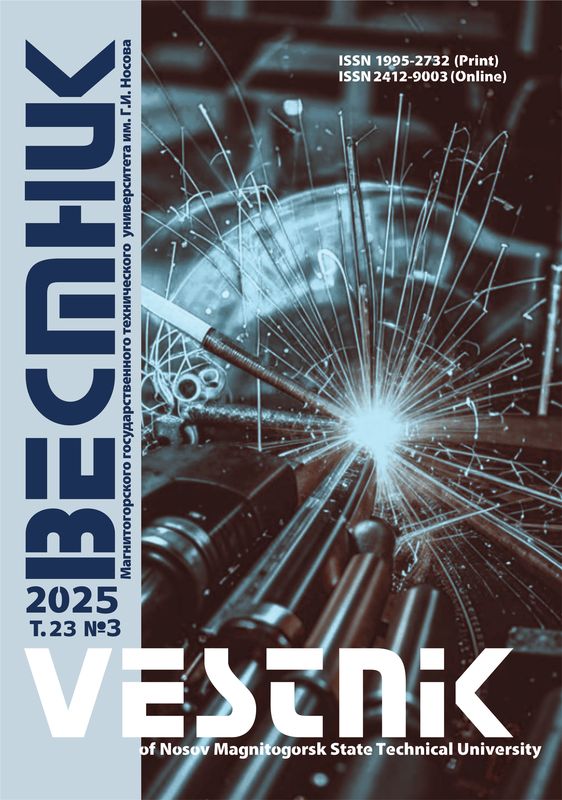DOI: 10.18503/1995-2732-2022-20-3-77-86
Abstract
Problem Statement (Relevance). The paper contains a definition of the concept of an “associated product”. The author proposed the concept of managing a complete complex of types of products generated, when manufacturing products, based on the detailed planning of their life cycles during the production preparation of a new marketable product. Along with the characteristics of the new product, a method has been developed to calculate the trend in the volume of generation of all types of waste in every technological operation. Types of waste are systemized and their life cycle is formalized. The document flow has been developed. The paper describes the examples of calculating the volume of a cutting emulsion, potentially hazardous for personnel, and significant volumes of associated product, chips, which are non-hazardous, but constantly accumulated in every process of performing a production task. Regarding potentially hazardous associated products, the author provides a technology map of the life cycle, providing for controlled conditions for their removal from workplaces. The paper contains an example of a schedule for removing associated products resulting from machining filter housings. Methods Applied. Functional and structural differentiation of production processes, inventory of waste and emissions. Originality. The author proposes the term of an “associated product”, combining all types of waste, emissions, discharges and pollution as a result of production processes. Calculation of associated product volumes is integrated into the APQP pre-production process for a new automotive component. Result. Integrated calculation of significant associated product volumes, resulting from technological processes, contributes to improved planning of processes of their life cycle and reduced environmental risks for personnel. Practical Relevance. It consists in planning the processes of removal of associated products based on the calculated production volumes, depending on the structure, content and parameters of the shaping process by cutting machine parts.
Keywords
environmental management, APQP pre-production process, waste, waste volume planning, life cycle monitoring
For citation
Safarova L.R. Planning Waste Generation and Developing the Technology for the Life Cycle in APQP Projects for the Preparation of Manufacturing a New Product. Vestnik Magnitogorskogo Gosudarstvennogo Tekhnicheskogo Uni-versiteta im. G.I. Nosova [Vestnik of Nosov Magnitogorsk State Technical University]. 2022, vol. 20, no. 3, pp. 77-86. https://doi.org/10.18503/1995-2732-2022-20-3-77-86
1. GOST 32602-2014 Pravila rascheta vybrosov zag-ryaznyayushchikh veshchestv v atmosferu pri mek-hanicheskoy obrabotke metallov na osnove udelnykh pokazatelei [Rules for calculating air emissions of pollutants during metal machining based on specific indicators]. Moscow: Standartinform, 2014, 22 p. (In Russ.)
2. GOST 56167-2014 Vybrosy zagryaznyayushchikh veshchestv v atmosferu. Metod rascheta ushcherba ot promyshlennogo predpriyatiya obektam okruzhayushchey sredy [Air emissions of pollutants. Method of calculating damage from an industrial enterprise to environment]. Moscow: Standartinform, 2014, 18 p. (In Russ.)
3. Kvashnin I.M. Promyshlennye vybrosy v atmosferu. Inzhenernye raschety i inventarizatsiya [Industrial air emissions. Engineering calculations and inventory]. Moscow: LLC AVOK-PRESS, 2005, 389 p. (In Russ.)
4. Kolobov G.A., Bredikhin V.N., Chernobaev V.M. Sbor i obrabotka vtorichnogo syrya tsvetnykh metal-lov [Collection and processing of secondary raw ma-terials of non-ferrous metals]. Moscow: Metallurgy, 1992, 288 p. (In Russ.)
5. Sanitary Regulations SN 2.2.4/2.1.8.562-96 Shum na rabochikh mestakh, v pomeshcheniyakh zhilykh, ob-shchestvennykh zdaniy i na territorii zhiloy zastroyki. Sanitarnye normy [Noise at workplaces, in residential, public buildings and residential development. Sani-tary Regulations]. Moscow: Publishing House of Standards, 1996, 15 p. (In Russ.)
6. Alekseenko A.V. Sbor i pererabotka struzhki [Chip collection and processing]. Moscow: Mechanical En-gineering, 1980, 120 p. (In Russ.)
7. GOST R 51814.6-2005 Menedzhment kachestva pri planirovanii, razrabotke i podgotovke proizvodstva avtomobilnykh komponentov [Quality management in planning, development and preparation of production of automotive components]. Moscow: Publishing House of Standards, 2005, 68 p. (In Russ.)
8. Safarova L.R., Glinina G.F. Time costs as a basis for calculating the volumes of associated products, waste and emissions in shaping operations. Vestnik SGTU [Vestnik of Saratov State Technical University], 2013, no.2 (71), pp. 91-93. (In Russ.)
9. Kondrashov A.G., Safarov D.T., Yurasova O.I. Fea-tures of planning the complexity of technological op-erations in the modern automotive industry. Teoriya i praktika obshchestvennogo razvitiya [Theory and Practice of Social Development], 2014, no. 16, pp. 72-76. (In Russ.)
10. Safarov D.T., Kondrashov A.G., Glinina G.F., Safa-rova L.R. Algorithm of calculation of energy con-sumption on the basis of differential model of the production task performed on machines with computer numeric control (CNC). IOP Conf. Series: Materials Science and Engineering, 240, 012060 (2017). DOI: 10.1088/1757-899X/240/1/012060
11. Safarov D.T., Kondrashov A.G., Safarova L.R., Glinina G.F. Energy planning in production shops with numerically controlled machine tools. Russian Engineering Research, 37, 9, 827–834 (2017).
12. Safarov D.T., Kondrashov A.G., Safarova L.R., Glinina G.F. Planning power consumption in produc-tion orders of machining parts on CNC machines. STIN [Machines and Tools], 2017, no. 4, pp. 27-35. (In Russ.)
13. ISO 14001:2015 Systèmes de management environnemental – Exigences et lignes directrices pour son utilisation.
14. ISO 16949:2016. Quality management systems. Par-ticular requirements for the application of SO 9001:2015 for automotive production and relevant service part organizations. Examples taken from published papers.












